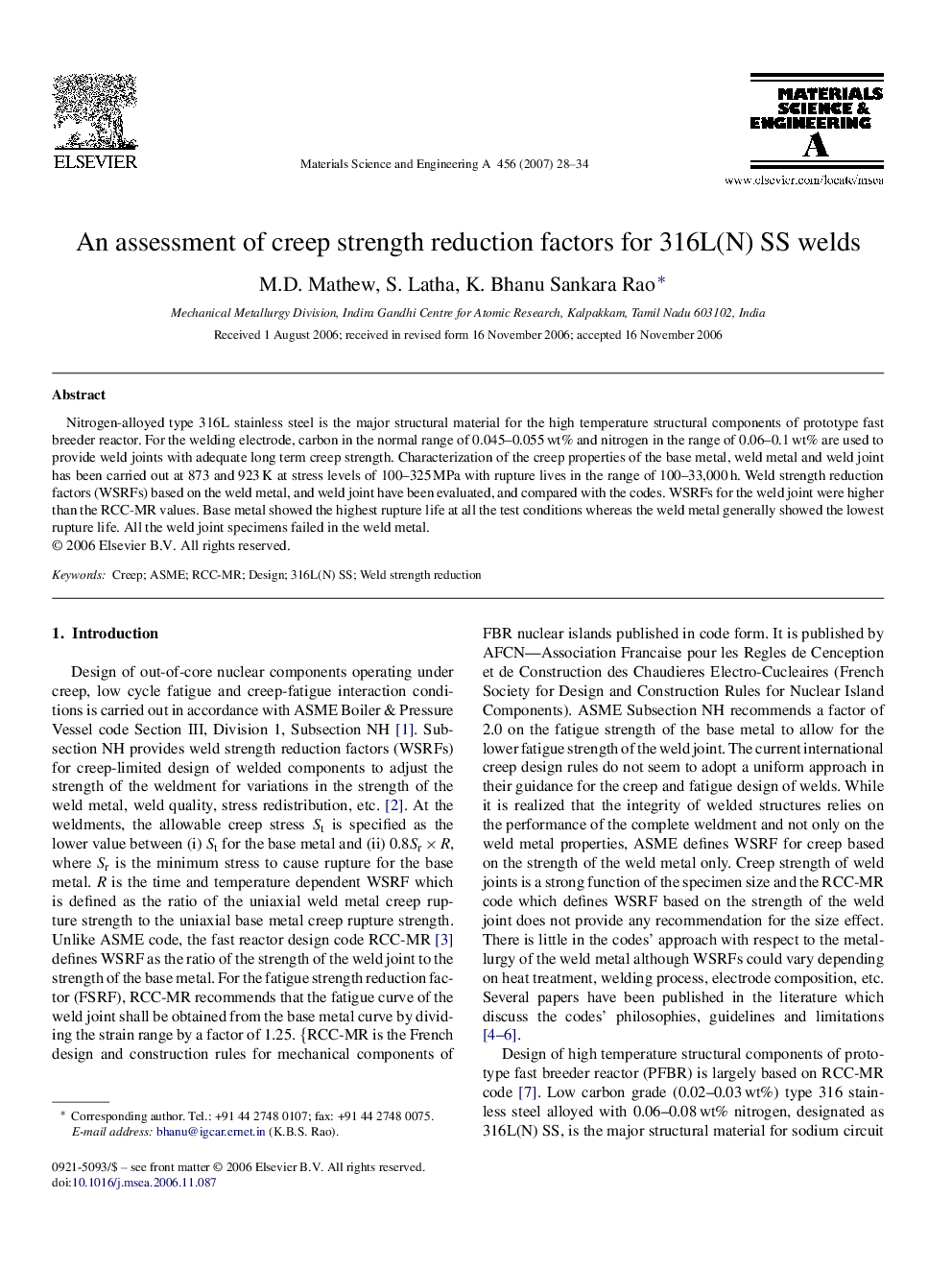| Article ID | Journal | Published Year | Pages | File Type |
|---|---|---|---|---|
| 1583779 | Materials Science and Engineering: A | 2007 | 7 Pages |
Abstract
Nitrogen-alloyed type 316L stainless steel is the major structural material for the high temperature structural components of prototype fast breeder reactor. For the welding electrode, carbon in the normal range of 0.045-0.055Â wt% and nitrogen in the range of 0.06-0.1Â wt% are used to provide weld joints with adequate long term creep strength. Characterization of the creep properties of the base metal, weld metal and weld joint has been carried out at 873 and 923Â K at stress levels of 100-325Â MPa with rupture lives in the range of 100-33,000Â h. Weld strength reduction factors (WSRFs) based on the weld metal, and weld joint have been evaluated, and compared with the codes. WSRFs for the weld joint were higher than the RCC-MR values. Base metal showed the highest rupture life at all the test conditions whereas the weld metal generally showed the lowest rupture life. All the weld joint specimens failed in the weld metal.
Related Topics
Physical Sciences and Engineering
Materials Science
Materials Science (General)
Authors
M.D. Mathew, S. Latha, K. Bhanu Sankara Rao,
